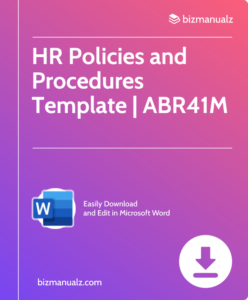What Are Core HR Processes?

If you’re a business owner or HR professional, you know that managing human resources can be a complex and time-consuming task. However, understanding the core HR processes can help streamline and improve your overall HR strategy. In this article, you’ll learn about the key processes involved in HR management and how they can benefit you. So, are you ready to optimize your HR practices for success? What Are Core HR Processes?
Understanding Core HR Processes
Having a thorough understanding of core HR processes is crucial for effectively managing human resources. These are the key steps involved in core HR processes:
- Recruitment and selection: This involves sourcing, screening, and selecting qualified candidates for job positions.
- Onboarding: Ensuring a smooth transition for new employees by providing them with necessary information, training, and introductions to company policies.
- Performance management: Establishing performance goals, conducting regular evaluations, and providing feedback and coaching to employees.
- Compensation and benefits: Managing employee compensation, including salary, bonuses, and benefits packages.
- Employee relations: Handling employee grievances, conflicts, and disciplinary actions in accordance with company policies and legal requirements.
- Training and development: Identifying training needs, designing and delivering training programs, and promoting professional growth for employees.
- Employee data management: Maintaining accurate and up-to-date employee records, including personal information, job history, and performance data.
- Offboarding: Managing the process of employee exits, including handling resignations, retirements, and terminations.
What Are the Key Components of Core HR Processes?
Core HR processes are the essential functions that help organizations manage their employees and ensure smooth operations. These processes encompass various aspects of the employee lifecycle, from recruitment to retirement. In this section, we will break down the key components of core HR processes, including recruitment and onboarding, performance management, compensation and benefits, and employee relations and engagement. Understanding these core processes is crucial for any organization looking to effectively manage and support their employees.
1. Recruitment and Onboarding
Recruitment and onboarding are essential aspects of core HR processes that ensure organizations attract and retain top talent. Here are the steps involved:
- Identify hiring needs and craft job descriptions.
- Advertise job openings through various channels.
- Screen resumes and shortlist potential candidates.
- Conduct interviews and assessments to evaluate candidates.
- Select the most suitable candidate for the position.
- Prepare employment offers and negotiate terms with the chosen candidate.
- Complete background checks and verify references.
- Facilitate the onboarding process, including orientation and necessary paperwork.
Pro-tip: Providing a smooth onboarding experience leads to higher employee engagement and faster integration into the company culture. Consider assigning a mentor or buddy to aid new hires in their transition.
3. Compensation and Benefits
3. Compensation and Benefits are essential aspects of core HR processes that organizations must effectively manage. Here are steps to optimize compensation and benefits:
- Evaluate industry benchmarks to determine competitive pay scales.
- Design a comprehensive benefits package that includes healthcare, retirement plans, and leave policies.
- Implement a performance-based compensation system to reward employees for their contributions.
- Regularly review and adjust compensation and benefits to align with market trends and employee needs.
- Communicate the compensation and benefits package to employees to ensure transparency and understanding.
To enhance compensation and benefits, organizations should also consider providing flexible work arrangements, professional development opportunities, and recognition programs. These initiatives can promote employee satisfaction and retention, leading to a motivated and engaged workforce.
4. Employee Relations and Engagement
Employee relations and engagement are crucial elements in the core HR processes. Nurturing a positive work environment and building strong relationships between employees and management can lead to increased job satisfaction and productivity.
To enhance employee relations and engagement, organizations can take the following steps:
- Establish clear and effective communication channels.
- Encourage employee feedback and suggestions.
- Implement recognition and reward programs to acknowledge outstanding performance.
- Provide opportunities for professional development and growth.
- Promote work-life balance and prioritize employee well-being.
By prioritizing employee relations and engagement, organizations can cultivate a supportive and motivating workplace culture, resulting in higher employee retention and overall organizational success.
Why Are Core HR Processes Important?
Core HR processes are the essential functions that a human resources department must perform in order to effectively manage and support the employees of an organization. But why are these processes so important? In this section, we will discuss the critical role that core HR processes play in ensuring compliance with laws and regulations, improving employee experience, and facilitating organizational growth and success. By understanding the importance of these processes, we can gain a deeper understanding of their impact on the overall functioning and success of a company.
1. Ensures Compliance with Laws and Regulations
Ensuring compliance with laws and regulations is a crucial aspect of core HR processes. To achieve this, organizations can take the following steps:
- Stay updated: Regularly monitor and stay informed about changes in labor laws, employment regulations, and industry-specific requirements.
- Review policies: Conduct a comprehensive review of existing HR policies and procedures to ensure they align with current legal requirements.
- Employee classification: Properly classify employees as exempt or non-exempt based on job responsibilities and applicable wage laws.
- Documentation: Maintain accurate and up-to-date documentation for employee records, including contracts, agreements, and necessary forms.
- Training: Provide regular training sessions for HR staff and managers to educate them on legal requirements and best practices.
By following these steps, organizations can ensure compliance with laws and regulations, minimizing legal risks and creating a fair and compliant work environment.
2. Improves Employee Experience
Improving the employee experience is crucial for organizations to enhance productivity and retention. Here are steps to optimize core HR processes for a better employee experience:
- Streamline recruitment and onboarding procedures to ensure a smooth and welcoming transition into the organization.
- Implement effective performance management systems that provide regular feedback, goal setting, and professional development opportunities. This not only improves employee experience, but also helps in the overall growth and development of the employees.
- Offer competitive compensation and benefits packages to attract and retain top talent.
- Promote employee relations and engagement through open communication channels and opportunities for collaboration.
By prioritizing employee experience, organizations can create a positive work environment and foster employee satisfaction and loyalty.
3. Facilitates Organizational Growth and Success
Facilitating organizational growth and success is a crucial role of core HR processes. To achieve this, organizations can take the following steps:
- Align HR strategies with the overall business objectives for focused efforts.
- Identify and nurture employee talent through effective performance management and career development programs.
- Implement robust succession planning to ensure a pipeline of future leaders and facilitate organizational growth and success.
- Establish a strong employer brand to attract top talent and retain high-performing employees.
- Create a positive work environment that fosters employee engagement and productivity.
- Regularly assess and address employee needs and concerns to maintain a motivated workforce and facilitate organizational growth and success.
By implementing these steps, organizations can leverage core HR processes to drive growth, cultivate a high-performing workforce, and achieve long-term success.
How Can Organizations Optimize Their Core HR Processes?
In today’s fast-paced and ever-changing business world, optimizing core HR processes is crucial for organizations to stay competitive. This section will explore three key strategies that organizations can implement to enhance their core HR processes: utilizing technology and automation, regularly reviewing and updating processes, and fostering a culture of continuous improvement. By incorporating these practices, organizations can streamline their HR operations and create a more efficient and effective workplace.
1. Utilize Technology and Automation
Incorporating technology and automation into core HR processes can greatly improve efficiency and accuracy. Here are some steps to effectively utilize these tools:
- Identify areas for automation, such as managing employee data, tracking leave and attendance, and conducting performance evaluations.
- Research and select HR software that aligns with your organization’s needs and budget.
- Integrate the software with existing systems and ensure the security of data.
- Provide training and ongoing support for HR staff on how to use the software.
- Regularly review and update the technology to stay up-to-date with advancements.
By leveraging technology and automation, organizations can streamline HR processes, reduce manual errors, and allow HR professionals to focus on strategic initiatives and employee engagement.
2. Regularly Review and Update Processes
Regularly reviewing and updating core HR processes is crucial for organizations to remain efficient and in line with evolving needs. Here are the steps to optimize these processes:
- Evaluate the current processes to identify areas for improvement.
- Collect feedback from both employees and managers to understand any pain points.
- Research industry best practices and emerging trends.
- Identify key metrics for measuring the effectiveness of the processes.
- Develop a plan for implementing necessary changes.
- Communicate changes to all stakeholders and provide training, if needed.
- Regularly monitor and assess the updated processes to ensure ongoing effectiveness.
- Make adjustments as required to address any new challenges or opportunities.
3. Foster a Culture of Continuous Improvement
Fostering a culture of continuous improvement is crucial for optimizing core HR processes. Organizations can cultivate this culture by following these steps:
- Encourage feedback and suggestions from employees to identify areas for improvement.
- Regularly review and analyze HR processes to identify inefficiencies and areas of opportunity.
- Implement innovative technologies and automation to streamline processes and increase efficiency.
- Provide training and development opportunities for HR staff to enhance their skills and knowledge.
- Promote collaboration and open communication among HR teams to share best practices and learn from each other.
- Recognize and reward employees who contribute to process improvement initiatives.
- Continuously monitor and evaluate the effectiveness of HR processes and make necessary adjustments.
By following these steps and fostering a culture of continuous improvement, organizations can ensure that their HR processes are constantly evolving and aligning with the changing needs and goals of the business and its employees.
Common Challenges in Implementing Core HR Processes
While implementing core HR processes is crucial for any organization, it is not without its challenges. In this section, we will discuss some of the common obstacles that companies may face when trying to implement these processes. From resistance to change to limited resources and inadequate training, we will examine the potential roadblocks and how they can be overcome in order to successfully implement core HR processes.
1. Resistance to Change
Change is often met with resistance in organizations, but there are steps that can be taken to address this challenge effectively:
- Communicate the need for change: Clearly explain the reasons behind the resistance to change and how it can be overcome, emphasizing the benefits for employees and the organization.
- Involve employees in the process: Encourage their input, listen to their concerns, and address them appropriately to alleviate their resistance.
- Provide training and support: Equip employees with the necessary skills and knowledge to adapt to the change and overcome their resistance.
- Offer incentives: Recognize and reward employees for their willingness to embrace the change and overcome their resistance.
- Lead by example: Demonstrate your own commitment to the change and encourage others to do the same, showing them how to overcome their resistance.
By following these steps, organizations can successfully overcome resistance to change and effectively implement core HR processes.
2. Lack of Resources and Budget
Limited resources and budget can pose challenges in implementing core HR processes. However, organizations can optimize their practices by following these steps:
- Prioritize: Identify the critical HR processes that require immediate attention and allocate resources accordingly, despite any limitations.
- Streamline: Streamline processes by eliminating unnecessary steps, automating tasks, and leveraging technology to make the most of available resources.
- Outsource: Consider outsourcing certain HR functions to reduce costs and gain access to specialized expertise, even with limited resources and budget.
- Training and Development: Invest in training and development programs to upskill HR staff and enhance their efficiency, despite any financial constraints.
- Cost-saving Strategies: Implement cost-saving strategies like bulk purchasing, negotiating contracts, and utilizing open-source software to make the most of available resources.
Pro-tip: Collaborate with other departments to share resources and knowledge, fostering a culture of efficiency and cost-effectiveness.
3. Inadequate Training and Communication
Inadequate training and communication can impede the successful implementation of core HR processes. To overcome this challenge, organizations can take the following steps:
- Assess training needs: Identify any gaps in employee knowledge and skills related to core HR processes.
- Develop comprehensive training programs: Create training modules that cover all aspects of HR processes, ensuring employees have a thorough understanding.
- Provide ongoing support: Offer continuous training and support to reinforce learning and address any questions or concerns that may arise.
- Improve communication channels: Establish clear channels for employees to seek guidance and share feedback, promoting effective communication.
- Regularly review and update training materials: Keep training materials up to date with any changes or enhancements to HR processes.
By prioritizing training and communication, organizations can overcome the challenges of inadequate training and communication, ensuring the successful implementation of core HR processes.
Frequently Asked Questions

What are Core HR Processes?
Core HR processes refer to the essential and fundamental activities involved in managing and maintaining an organization’s human resources. These processes typically include recruitment, onboarding, performance management, and employee relations.
What are some examples of Core HR Processes?
Some common examples of Core HR processes include job analysis and design, employee training and development, compensation and benefits administration, and employee engagement and retention strategies.
Why are Core HR Processes important?
Core HR processes are crucial for any organization to effectively manage their human resources. They help establish a foundation for workforce planning, employee development, and overall organizational success. These processes also ensure that employees are treated fairly, which can lead to higher job satisfaction and productivity.
What is the role of technology in Core HR Processes?
Technology plays a significant role in Core HR processes. HR software and systems can automate many of these processes, saving time and resources while also increasing accuracy and efficiency. Technology also provides HR professionals with valuable data and analytics to make informed decisions and improve HR strategies.
How can organizations improve their Core HR Processes?
Organizations can improve their Core HR processes by regularly reviewing and updating their policies and procedures, investing in HR technology, and providing training and development opportunities for HR professionals. It is also essential to listen to employee feedback and make necessary adjustments to ensure that these processes are meeting the needs of the workforce.
Are Core HR Processes the same for all organizations?
No, Core HR processes may vary depending on the size, industry, and specific needs of an organization. While the fundamental activities may be similar, the specific policies, procedures, and strategies may differ. It is essential for each organization to identify their unique Core HR processes and tailor them to their specific workforce and goals.

















Leave a Reply